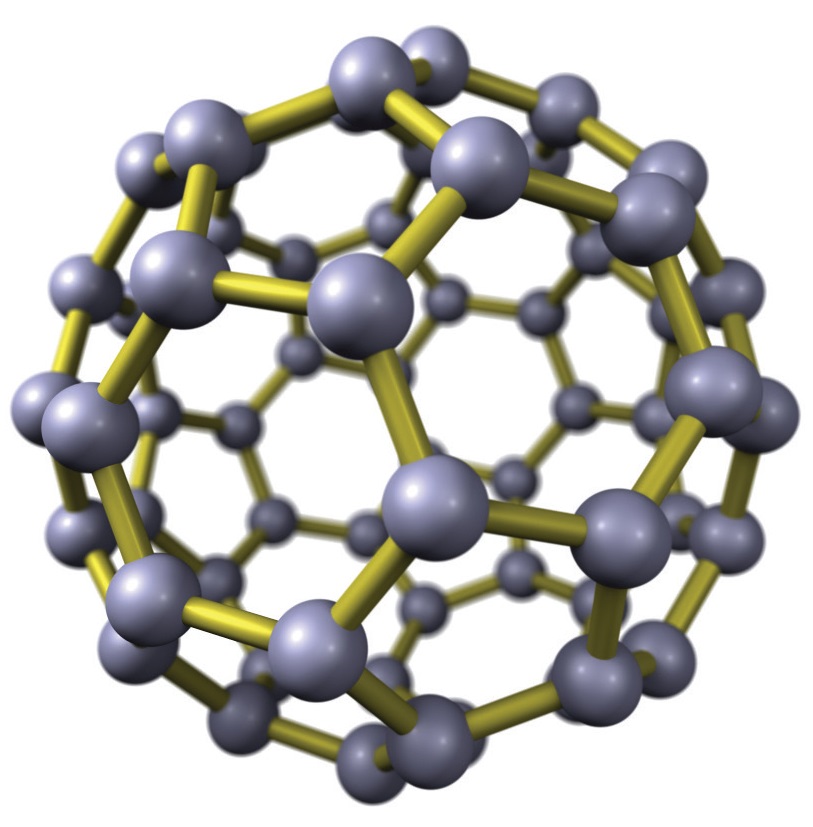Imaging rolling nanoparticles
Drs. Wilfred T. Tysoe & Nicholas D. Spencer | TLT Cutting Edge June 2011
In situ transmission electron microscopy studies reveal how nanoparticles move in a sliding contact.

Ever since the discovery in 1985 of carbon “buckminsterfulleres,” named for the inventor of geodesic domes that the structure resembles, the notion of using such molecules as nano-sized ball bearings has appealed to tribologists. It also is possible to synthesize inorganic analogs of these nanoparticle systems with other layered compounds such as molybdenum or tungsten disulfides, which have been shown to reduce friction and to be potentially useful oil additives or solid lubricants.
Since both MoS
2 and WS
2 are layered compounds held together by weak van der Waals interactions (similar to those in graphite) the layers are able to easily slide over each other and provide low-friction films. However, the fact that the inorganic fullerenes reduce friction provides no insights into whether these operate as nano-sized ball bearings or whether they break up to form a thin lubricating layer on the surface.
While some information about what has occurred during sliding can be obtained using post-mortem analyses, questions regarding what happens at a sliding-sliding solid interface can only really be answered by interrogating the interface during sliding. Unfortunately, techniques that can probe such interfaces are few and far between.
To address this question, Dr. Fabrice Dassenoy, working in the group of professor Jean-Michel Martin at the École Centrale in Lyon, France, and in collaboration with the Nanofactory company, have designed a novel sample holder that can be incorporated into a transmission electron microscope (TEM). This allows them to look directly at inorganic fullerene nanoparticles in a sliding contact.
In order to make an electron-transparent substrate required for TEM, they used a silicon wedge. Sliding was achieved using a flattened atomic force microscope tip, with a flat area of about 500 nm. Different normal forces could be applied while sliding.
Experiments were carried out using highly crystalline molybdenum disulfide nanoparticles of about 70 nm in diameter that were synthesized by professor Reshef Tenne’s group from the Weizmann Institute in Israel—pioneers in the use of inorganic fullerene nanoparticles. They first examined what happened to a nanoparticle under a relatively low normal force of 100 nN. In this case, they were able to follow a nanoparticle rolling about half of its circumference, both in the forward and backward directions, without any apparent damage to the particles. They then examined the effect of increasing the normal force to 400 nN with a slightly larger particle diameter of 100 nm. Now they found that the particle stuck to the tip without sliding. In addition, they were able to discern the appearance of some layered material, suggesting that the nanoparticle had undergone some exfoliation.
While the authors acknowledge that these are preliminary results requiring much more systematic investigation, the findings do suggest that the nanoparticles can operate both by rolling and exfoliation. More important, however, they show that we now have the tools to peer directly into the sliding solid-solid interface and see tribological effects as they occur.
FOR FURTHER READING:
Lahouij, I., Dassenoy, F., de Knoop,L. , Martin, J.-M., and Vacher, B. (2010), “In Situ TEM Observations of the Behavior of Individual Fullerene-Like MoS2 Nanoparticle in a Dynamic Contact,”
Tribology Letters,
42 (2), pp. 133-140.
 Eddy Tysoe is a Distinguished Professor of Physical Chemistry at the University of Wisconsin-Milwaukee. You can reach him at wtt@uwm.edu
Eddy Tysoe is a Distinguished Professor of Physical Chemistry at the University of Wisconsin-Milwaukee. You can reach him at wtt@uwm.edu.
 Nic Spencer is professor of surface science and technology at the ETH Zurich, Switzerland. Both serve as editors-in-chief of STLE-affiliated Tribology Letters journal. You can reach him at nspencer@ethz.ch
Nic Spencer is professor of surface science and technology at the ETH Zurich, Switzerland. Both serve as editors-in-chief of STLE-affiliated Tribology Letters journal. You can reach him at nspencer@ethz.ch.